Shimano GRX 825 Di2 first ride review - tested on the gravel roads of the Tour de France
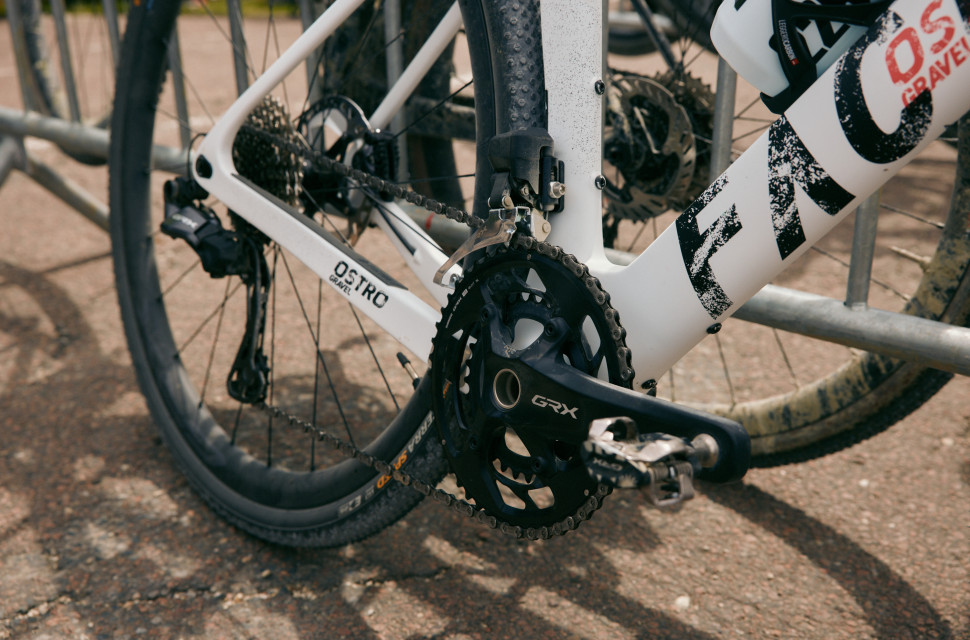
The pros have already hopped back into racing, while I am still coughing out the dust from Sunday's chemins blancs – the infamous white gravel segments incorporated into Stage 9 of 2024 Tour de France. Ahead of the pros rattling and running through the gravel segments, I got transported to Troyes at Shimano's invitation right after the Eurobike 2024 show. The Japanese component giant was utilising (to quote Pogacar) the "gravelly gravel" to take a few sleep-and-chat-deprived journalists out on the stage with the brand's newest gravel offering, the Shimano GRX 825 Di2 12-speed and here are my first impressions with the groupset –alongside a little refresher on the tech specs.
- Best gravel bikes 2024 - drop-bar bikes for off-road riding
- Are gravel bikes old-school mountain bikes?
- Gravel bike racing – everything you need to know
As our 'Inside Tour' host jokingly said — the men are just following the women in incorporating some gravel to the Tour, as it was really the 2022 Tour de France Femmes that introduced gravel segments to the modern-day Tour de France (yes, of course, many of the mountain passes were not paved when the race was on decades ago). And perhaps the sentiment of that goes for the GRX 825 Di2 as well — it’s not exactly anything new anymore, especially as the groupset has now been out for a good month and a half. But repetition is the mother of learning so here we go...
Before you get excited about the prospect that a 1x GRX 825 has made an appearance, I will crush your hopes right away. It was still a 2x setup we rode, and we were very clearly told there was no 1x for now – though it is coming. The reasoning Shimano’s European gravel marketing manager Erik Van Kooten presented to us was that the company sees 2x still dominating the gravel bike market, with a good two-thirds of gravel bikes equipped with the double-chainring setup instead of a single one in the 2024/25 sales. Admittedly, with gravel racing booming as strongly as it is, Shimano's focus on the racier 2x setup is no surprise.
But as I hinted before, it could be said that the 12-speed Di2 GRX wasn’t released with quite as much fanfare as its mechanical sibling, the 820, which saw daylight (officially) in August 2023. Perhaps that is also because the launch of the mechanical 12-speed groups also introduced a new visual look to the product lineup, and the tagline “united in gravel”, along with the product categories "unstoppable", "unbeatable" and "undroppable".
But while the mechanical 12-speed saw three configurations with two 1x options, there is only one option with the Di2 version. If you take a closer look at the mechanical GRX 12-speed group and compare that to the new Di2 version, you can see that much of it is an amalgamation of already existing technologies. The electronic sibling borrows the crankset and carries forward a lot from the 11-speed GRX, including the crankset and brake calipers. The only thing that has changed in terms of the crankset is the chainrings, but the option to use your existing 11-speed set makes upgrading your groupset a tad easier and cheaper.
When it comes to the balance of the groupset, yes, things have changed but again quite subtly. The system is now semi-wireless, meaning the shifters are easy to slot onto any handlebar without the need to fiddle with extra cables, and the brains of the system lay in the rear derailleur that continues to be connected to the battery in the seat tube. Charging is also done through the rear derailleur, which has a small and rather well-disguised port for the charger cable. This is the structure that Shimano already introduced with its 12-speed Di2 road groupsets, so again nothing really new there.
But the shifters have been updated with a different shape and feel, and are now a tiny bit bulkier. They still retain the more aggressive bend-up and taller shape than the road shifters and two options for shifting a gear (the two paddles behind the brake levers and a button inside each shifter).
The shifting paddles behind the brake levers have moved slightly out, meaning they are more intuitive to find. They also continue to borrow the anti-slip coating from Shimano’s fishing rods. I can’t say I’ve really held a fishing rod many times in my life but while the 815 was already a shifter that I very much enjoyed, the 825 takes that nice feel farther. According to Shimano, they should also work better with flared handlebars that are (mostly) ruling the gravel setups.
Though the Di2 systems have always been somewhat customisable, with the GRX 825, Shimano has focused on the "Front Shift Next" setup, which essentially means you can programme one button (or shifter flick) to take care of both the up and downshifts of the front derailleur.
And going back to the topic of brakes, Shimano says that the callipers have 10% more piston retraction, meaning there’s more space for the rotor and less rub. I don’t know if this has really been solved as there was still some brake pad/rotor rubbing after longer descents. Not to mention the mud and dirt that continues to very much make their way into the pads and callipers and the resulting squealing.
And that just about rounds up the main tech points of the GRX825. There are also some claims about improved shifting performance but I will touch on those in the ride impressions.
Shimano GRX 825 Di2 - first ride impressions on the gravel segments of Stage 9
Though I've done a few rides testing the Shimano GRX 825 on my home roads, having the chance to test the groupset on the literal champagne gravel of France was a rather unique, full-on experience with the drivetrain. As I was trying to somehow stay upright on the nearly 90-degree gravel road turns on the white roads of Champagne, I admit lots of things went through my head beyond the groupset – including the worry about what the roadside fans would think about me if I decked it in front of them on a gravel bike, when the pros were meant to do the same gravel segments on skinny 30mm tyres.
But beyond the worries about slipping off the road, the 90km worth of riding also made me ponder whether the pros ride a GRX groupset at the Tour? My conclusion: probably not. Though watching their chains slap around madly on the slow-motion shots from the stage made me think they'd certainly benefit from the GRX rear derailleur clutch, most of the gravel-specific groupset functions are not that useful to roadies who can push 300W for hours on end.
For me, though, the gravel setup on any sort of rougher terrain is definitely a performance-enhancing experience. As is quite usual at press events, I was on a bike that I had never even touched before the time came to ride a few hours on it and, surprisingly, it wasn’t all that bad an experience this time. Without sounding like I've been influenced by the special treatment Shimano laid out for us, much of that was because of the groupset. I've always enjoyed the feel and performance of the GRX drivetrains, all the way from the 10-speed 400 series, and the Di2 825 didn't let me down. What's so good about them, you might ask?
Though the mechanical groupsets are not bad by any means, the one thing that I particularly like about the GRX Di2 groupsets is the hood and lever shapes which I found very intuitive and comfortable. The slight changes to the shifter shape and the shifters themselves are a mix of good and bad for me, though. The slightly bulkier shape is not necessarily a positive for my smaller hands, but the revised paddle position and material really add to what was already a nice shifting experience. Even with a little bulk, Shimano's shifter paddles have also always been easier for me to reach - they kind of extend further up than the SRAM ones which means I can use my not-so-long front finger for breaking and shifting.
The wireless nature of the shifters also adds a lot of ease to building up a bike with this groupset or simply swapping to a different (possibly integrated) handlebar. The actual shifting is sharp with no hints of chain drops – despite my best efforts in attempting to unsettle the chain and front derailleur.
The gear range of the sub-compact 48-31T chainset paired with an 11-36T cassette made the punchier climbs an easy task, and though the rolling terrain we rode through meant the biggest 48-11 ratio wasn’t exactly allowing me to push the pace on modest descents. My setup had a 507% gear ratio, while the mechanical 12-speed Unstoppable 1x gearing would trump this giving you the largest range at 510%. The jumps between gears would arguably be bigger and, while I belong to the group preferring the simplicity of a 1x setup on gravel, I can still see the wider use case for the 2x especially if you want to use the groupset for all sorts of riding, not just gravel.
The crankset is, however, also the one aspect of the electronic GRX groupsets that has let me down – not only in its newest iteration but already in its 11-speed guise. Nothing to do with its quality, but rather the crank length options. While the more affordable 600-series GRX cranksets come with a 165mm crank length option, the GRX 825 continues to use the RX820 chainset which only comes with 170, 172.5 and 175mm crank lengths. You can of course use the 600-series crankset as part of the 800-series build to get the shorter cranks but that comes with about a 100g weight penalty (the 820 set has a claimed weight of 710g, and the 610 comes in at 811g).
When asked about this, Shimano said there is no market for the shortest length. Considering it is offered in the lower tier specs, I am not sure I can that's a fully watertight answer without numbers to back it up – and it's not only shorter riders like me wanting to ride shorter cranks but it's a general trend across disciplines regardless of rider heights.
The one thing that I was new to testing at the mini-press camp was the Front Shift Next function – something that Shimano introduced with the GRX 825. Essentially, this means you can use one of the two shifting buttons to shift both up and down at the front. For me, that meant the left side button was the one the mechanic had programmed to perform the shifts and with a simple press of a button, the front mech moved the chain up or down. Is this really a huge benefit to most riders? I can't speak for everyone but, for me, I'd prefer to see the buttons rather programmed for shifting pages on the cycling computer – which yes, you can continue to do. But then again, for less experienced riders the option of simplifying the front shift this way is useful.
While my time with the newest GRX 825 Di2 has been limited, in many aspects, it has managed to impress me. It's seen subtle improvements that deliver tangible results in comfort and, as before, the groupset remains as intuitive to use as before. If you're eager to get an even more comprehensive verdict on this groupset, I have a beautifully pink Orbea Terra M20iTeam test bike at home, equipped with this very setup. I will continue to test it 'Outside the Tour' and, once I've formulated an objective opinion, a detailed review will follow.
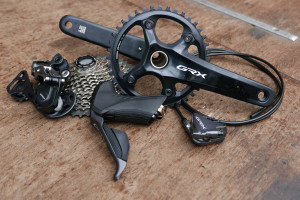


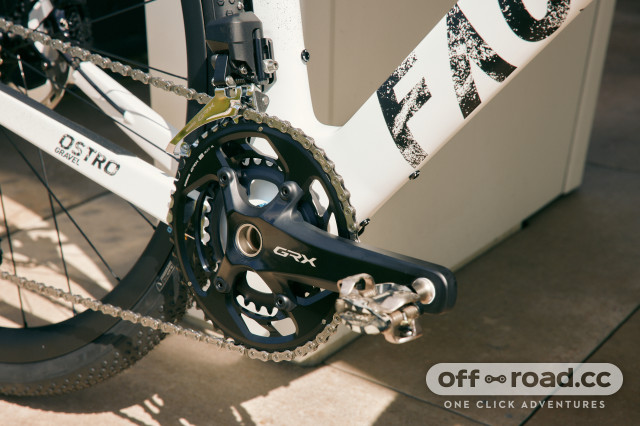


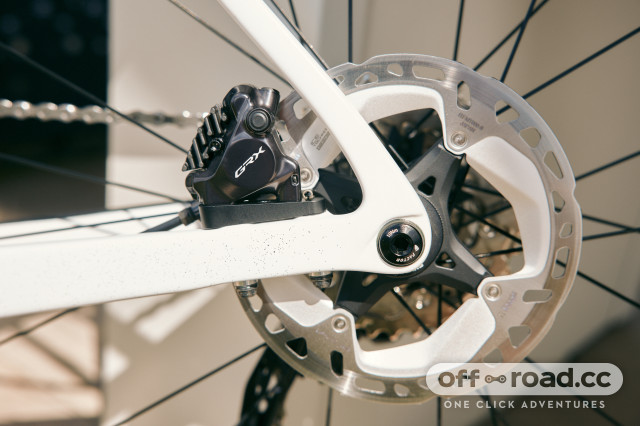

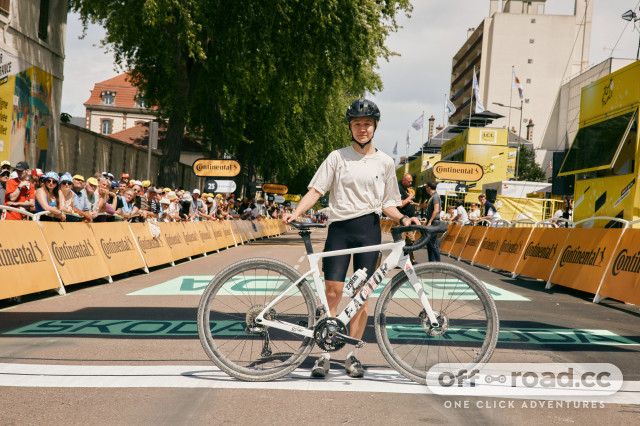

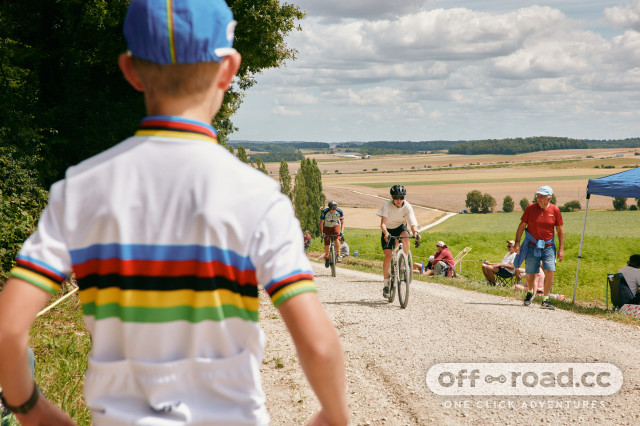
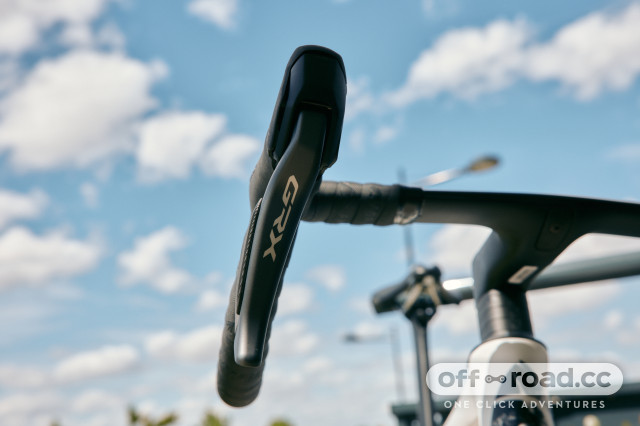


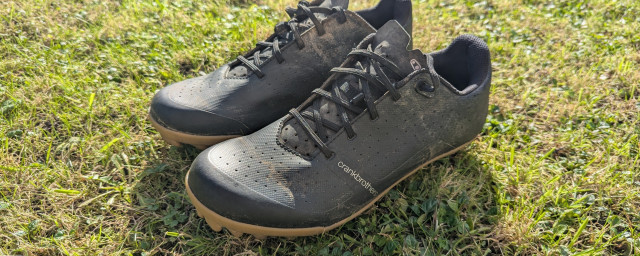






1 comments
Looking forward to a fuller review, as an owner of the 11sp GRX DI2. Having just had the oppprtunity to ride a 105 12sp DI2 bike I was surprised how much worse braking from the hoods was - mostly due to the rounded face of the levers. It looks as if 12sp GRX has kept the more flatter face of GRX which is a good thing IMO.